Answered step by step
Verified Expert Solution
Question
1 Approved Answer
Based on Nike Inc case ( screenshot attached) - Reach out for more details. Discussion Questions What are the most relevant issues that is identified
- Based on Nike Inc case ( screenshot attached) - Reach out for more details.
Discussion Questions
- What are the most relevant issues that is identified in the case?
- Conduct a 5 C's analysis to evaluate the environment in which Nike operates, to include the Context, Competition, Collaborators (Value Chain), Customers and Company. Within the Company Analysis, include Nike's vision/mission statement, description and core competencies of the firm, revenue and profitability, positioning statements for the primary and secondary target markets, marketing mix and balanced scorecard.
- What advances in mobile technology and the development of the Internet of Things (IoT) could potentially change the industry and what innovation and technology strategies Nike should develop to gain a greater competitive advantage as the industry changes? Should Nike go it alone or form partnerships? If Nike forms partnerships, what are the risks that Nike's partners will move into Nike's turf? How to mitigate those risks?
- Develop an Expanded SWOT Analysis for Nike regarding the company and the Surface product, to include the strengths, weaknesses, opportunities and threats as well as the strategies to maximize the strengths and opportunities and mitigate the weaknesses and threats.
- What are the recommendations to best address the issues raised in the case (attached), the risks associated with each recommendation and propose to mitigate the risks?
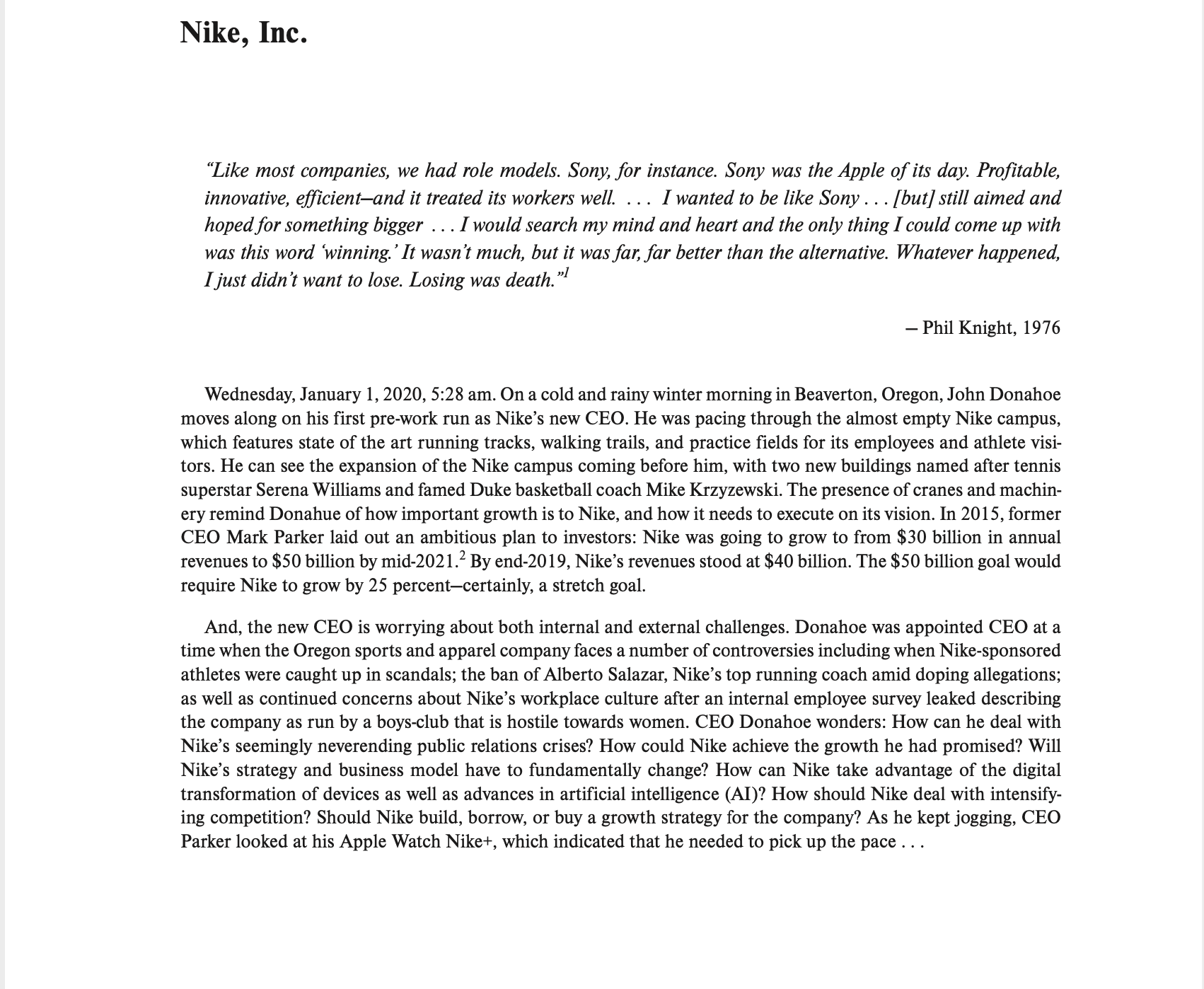

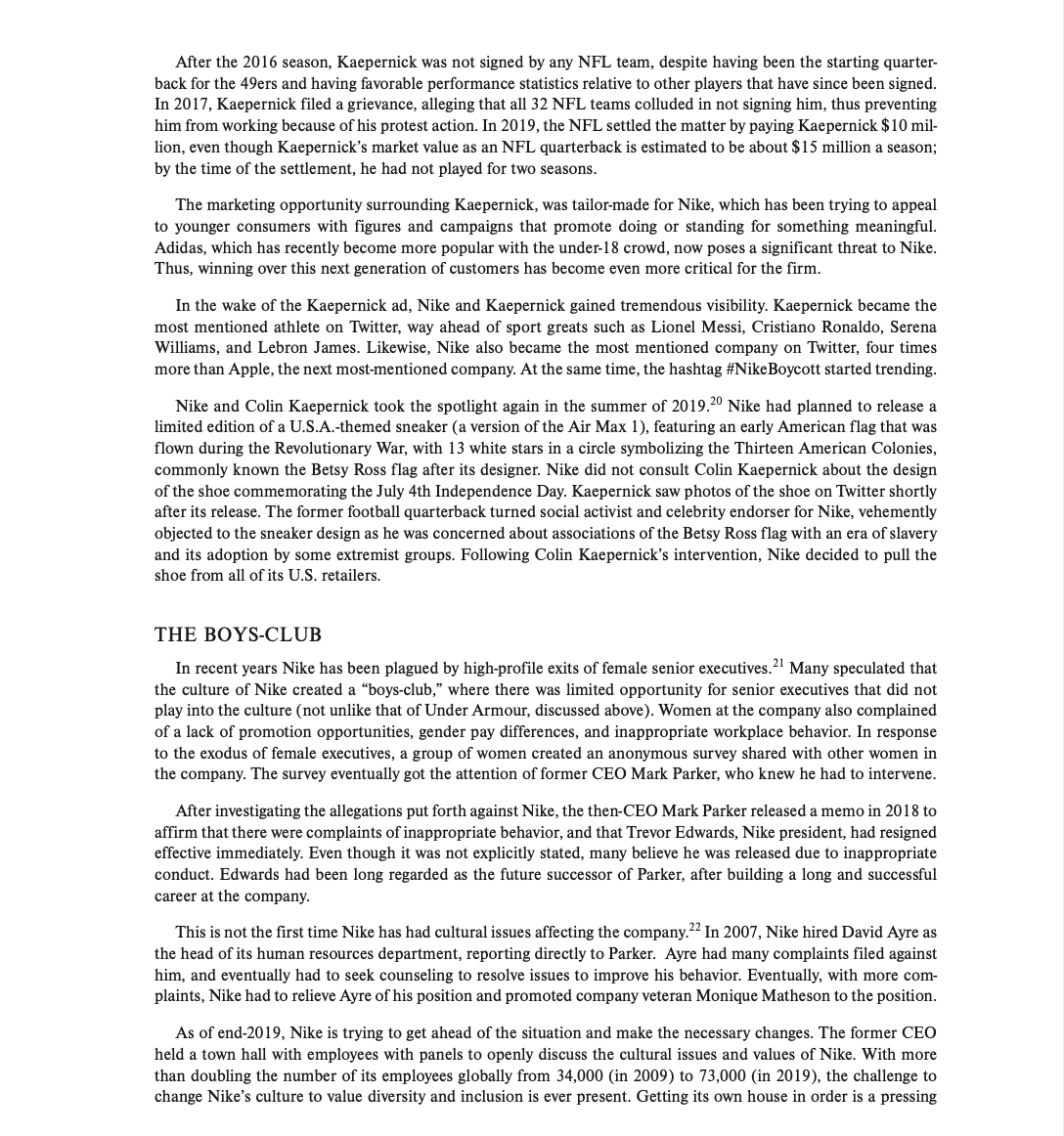
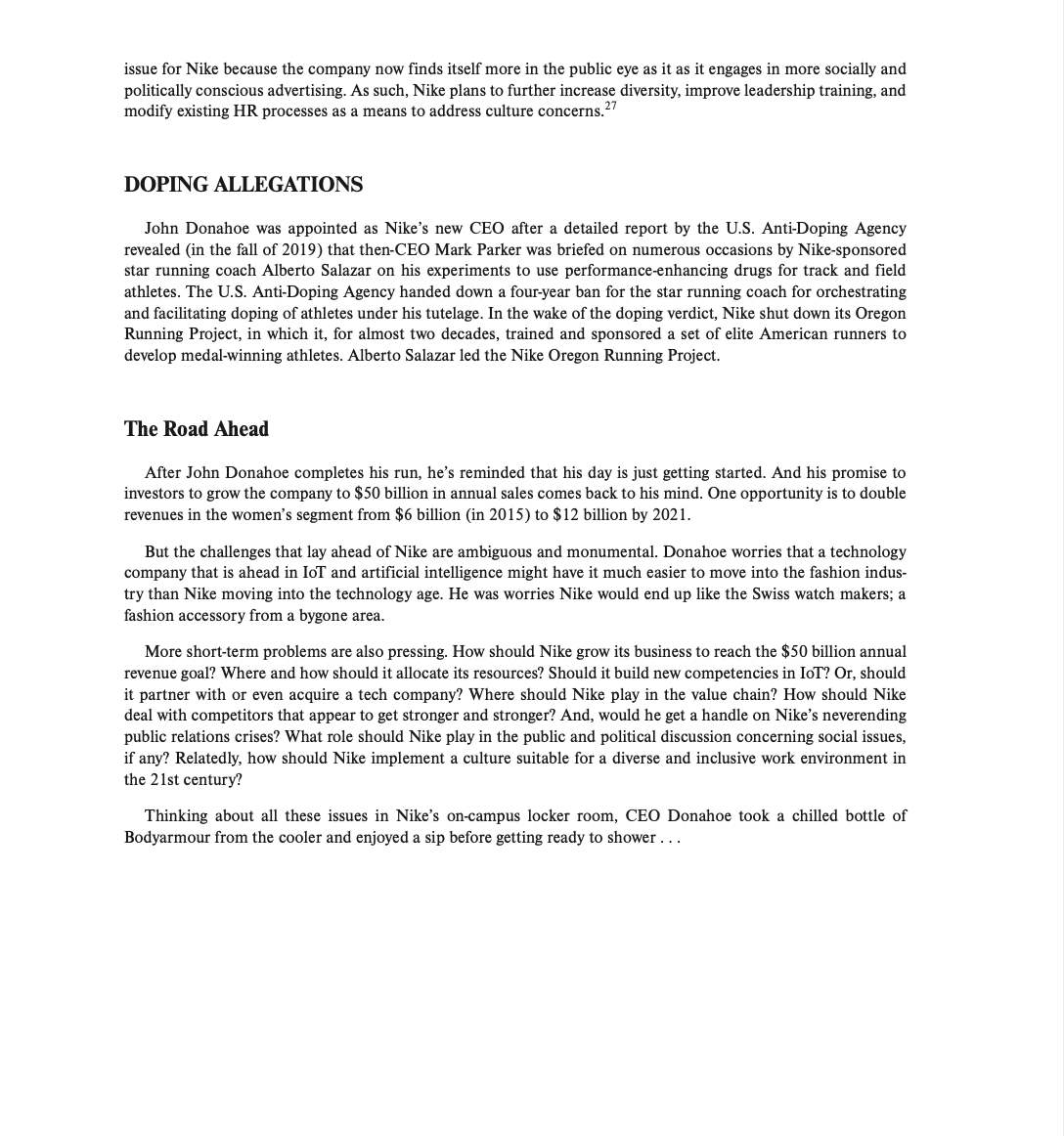
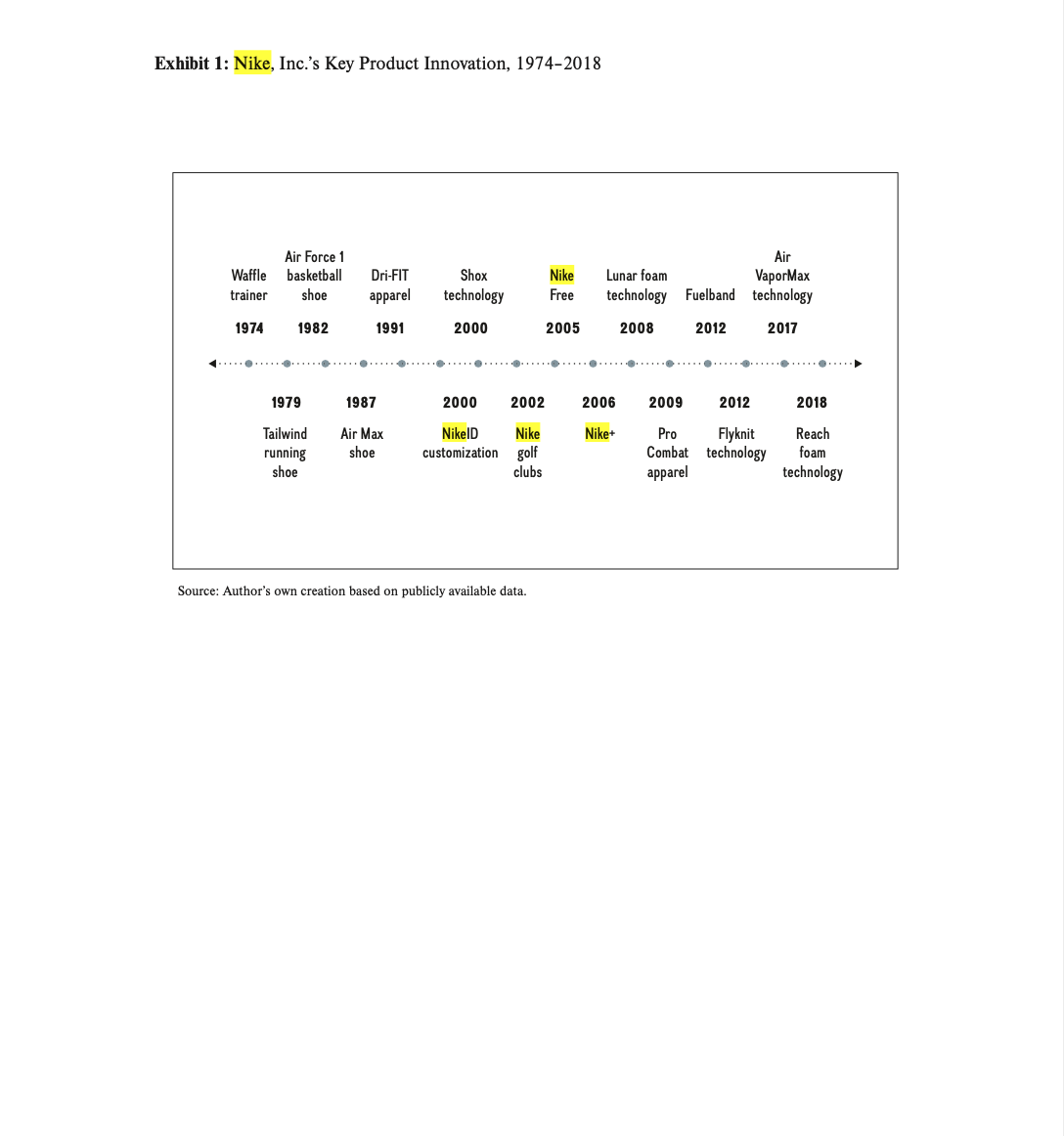

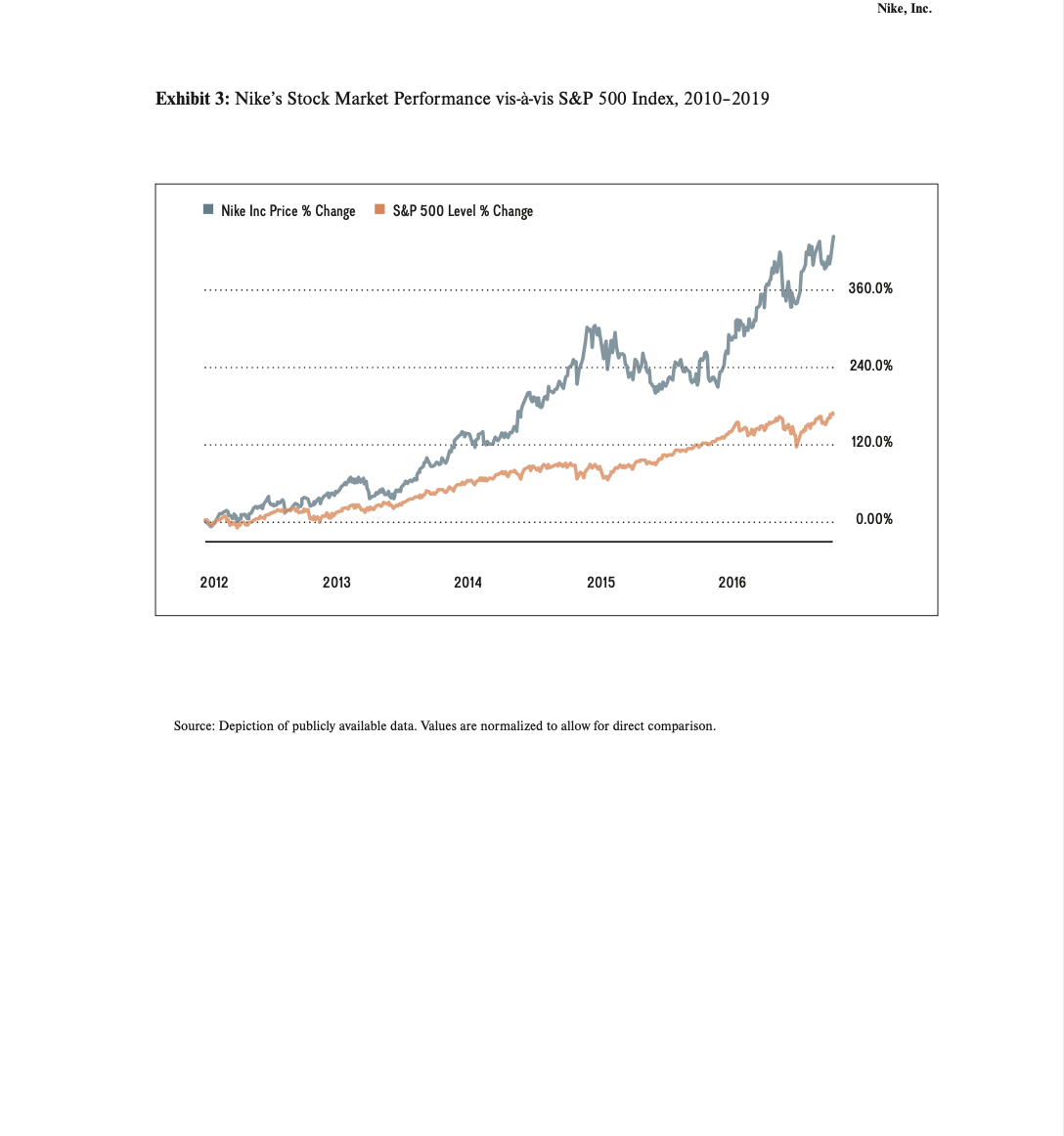
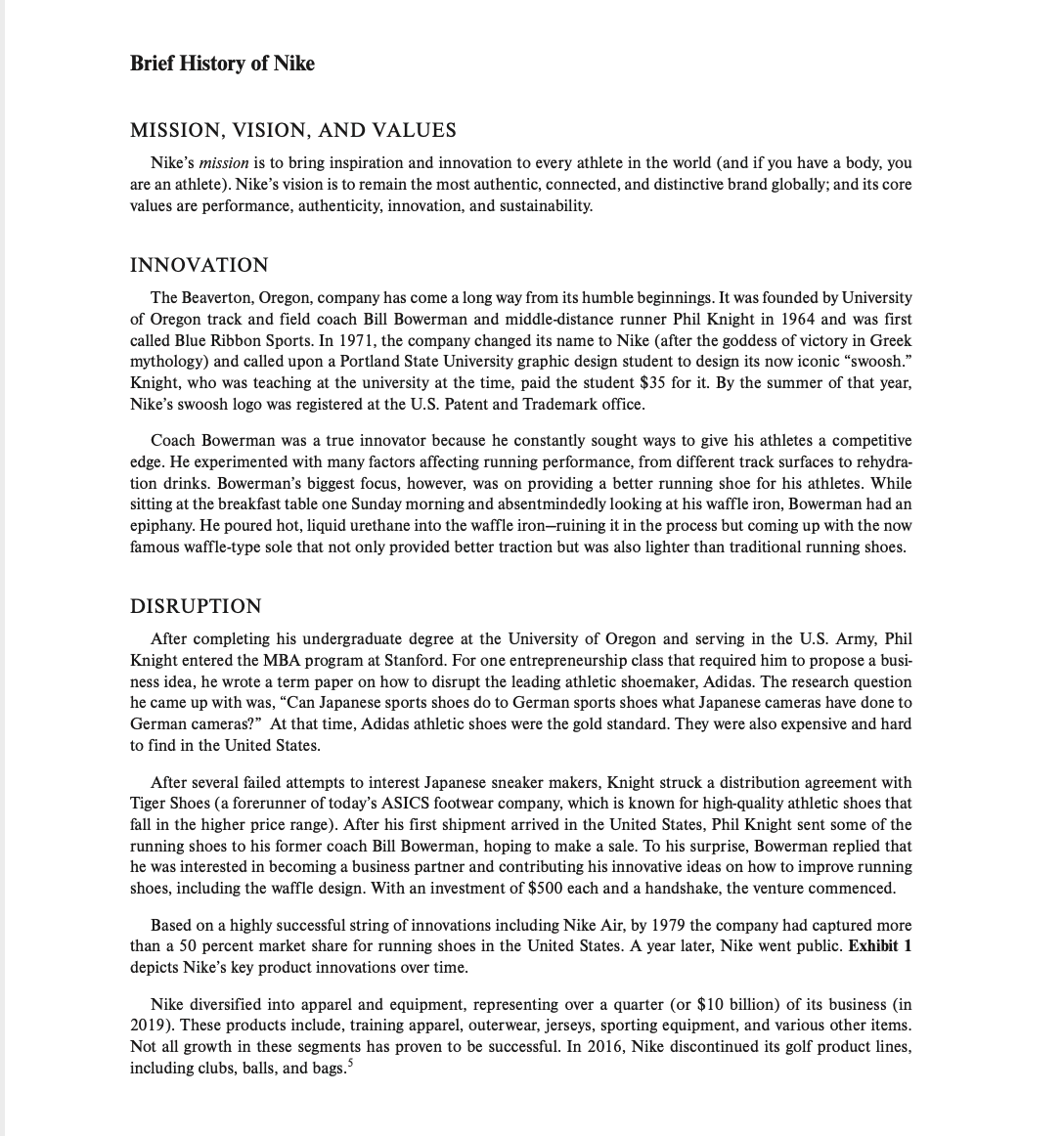
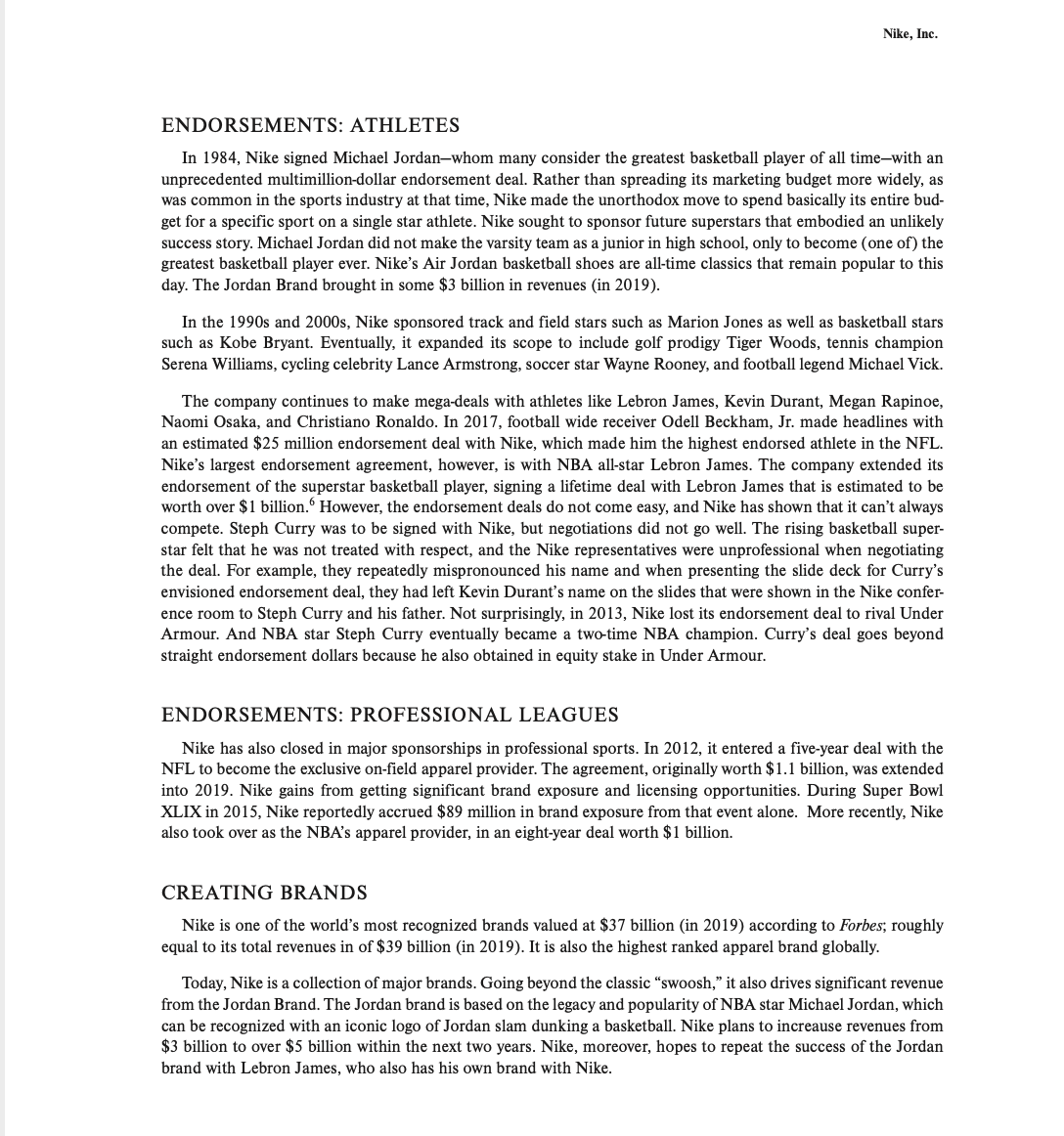
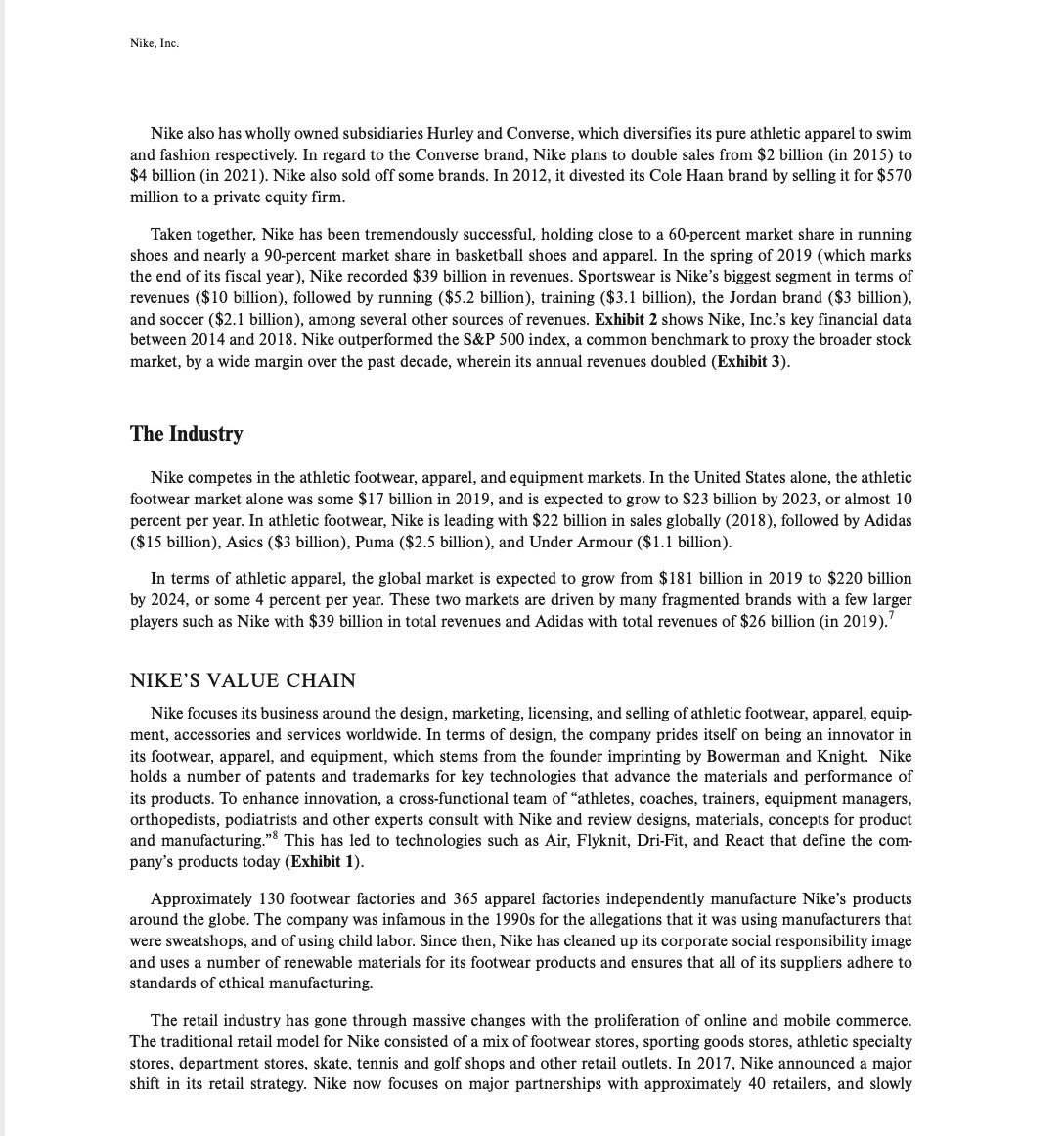
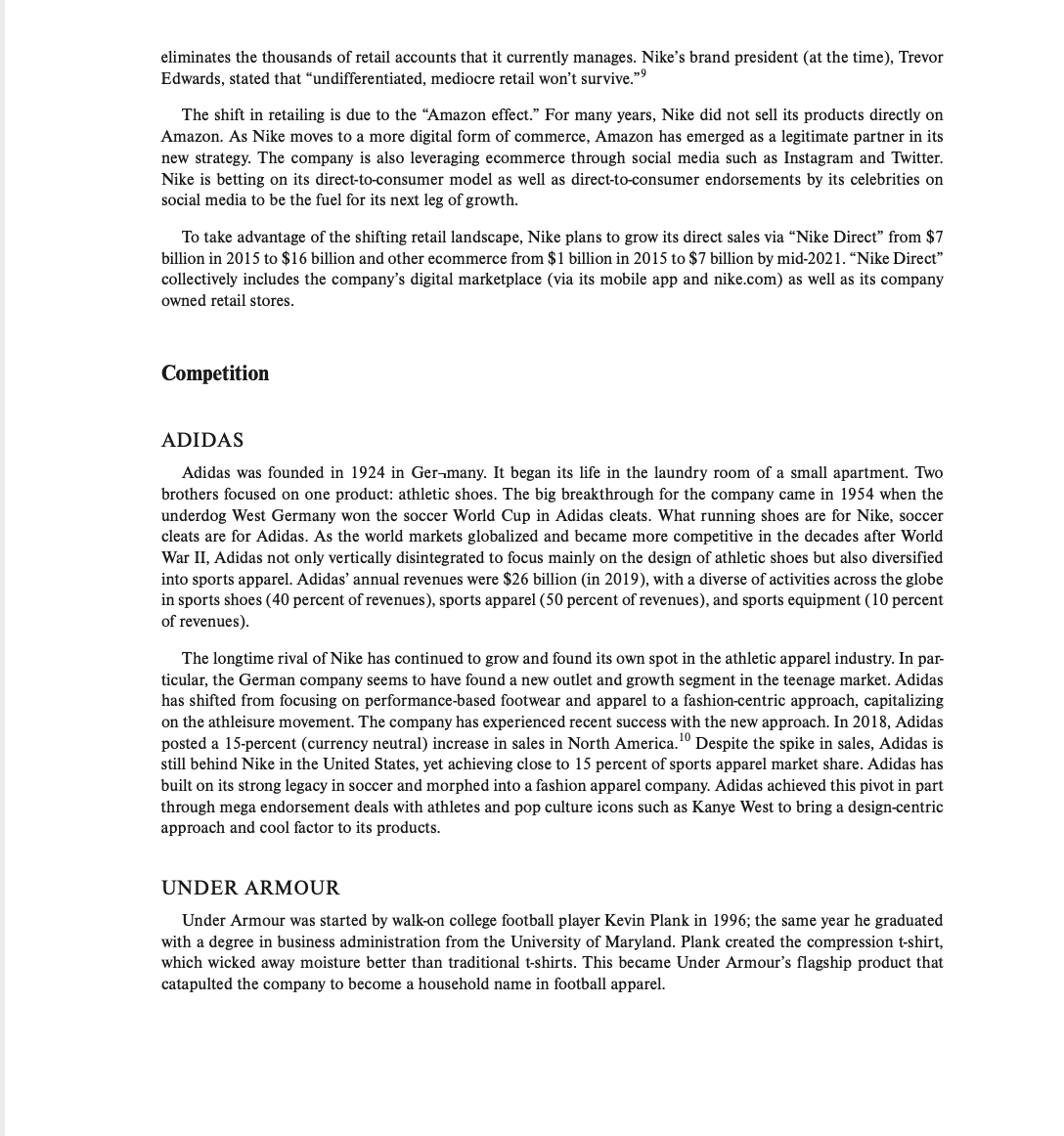
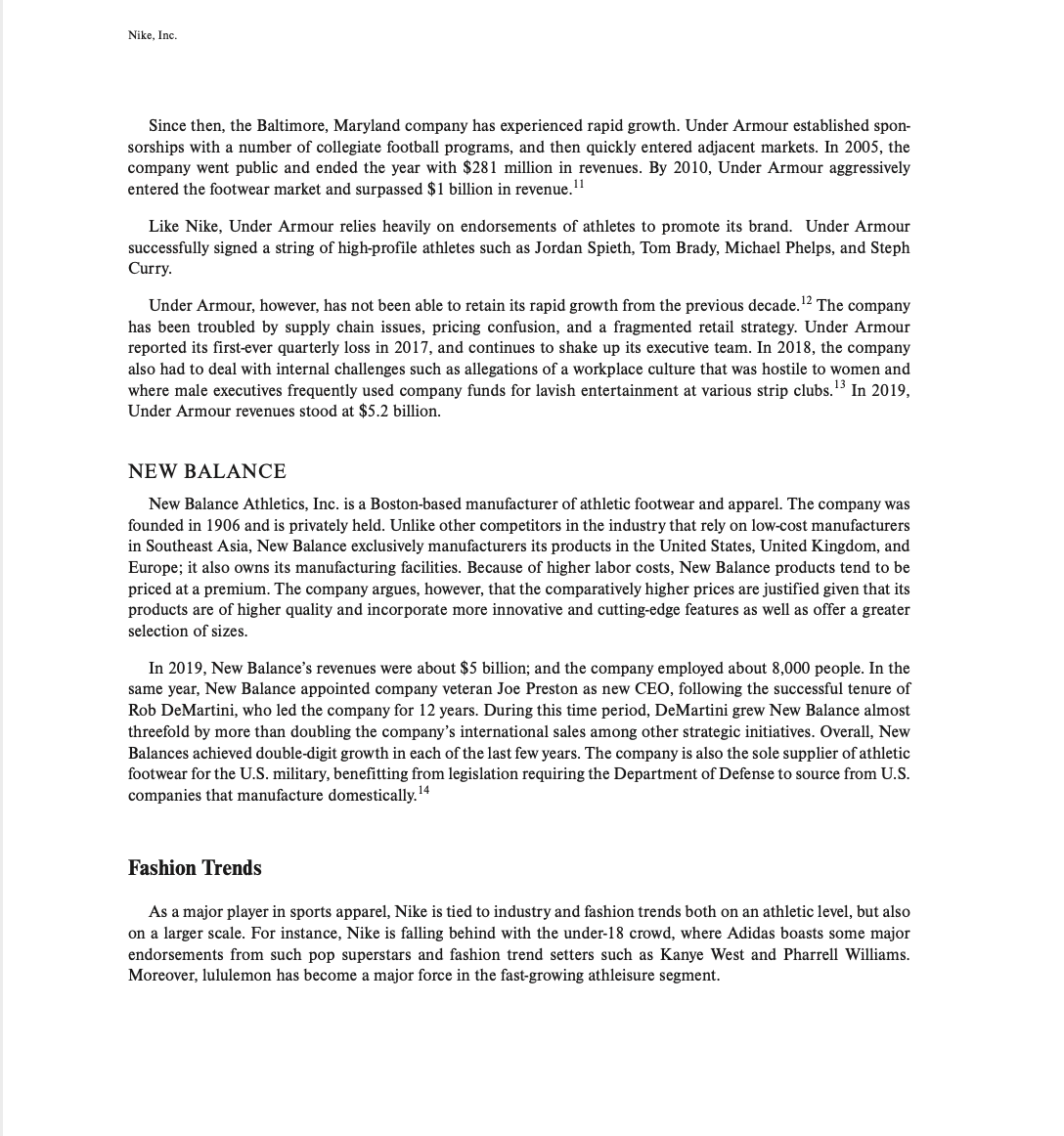

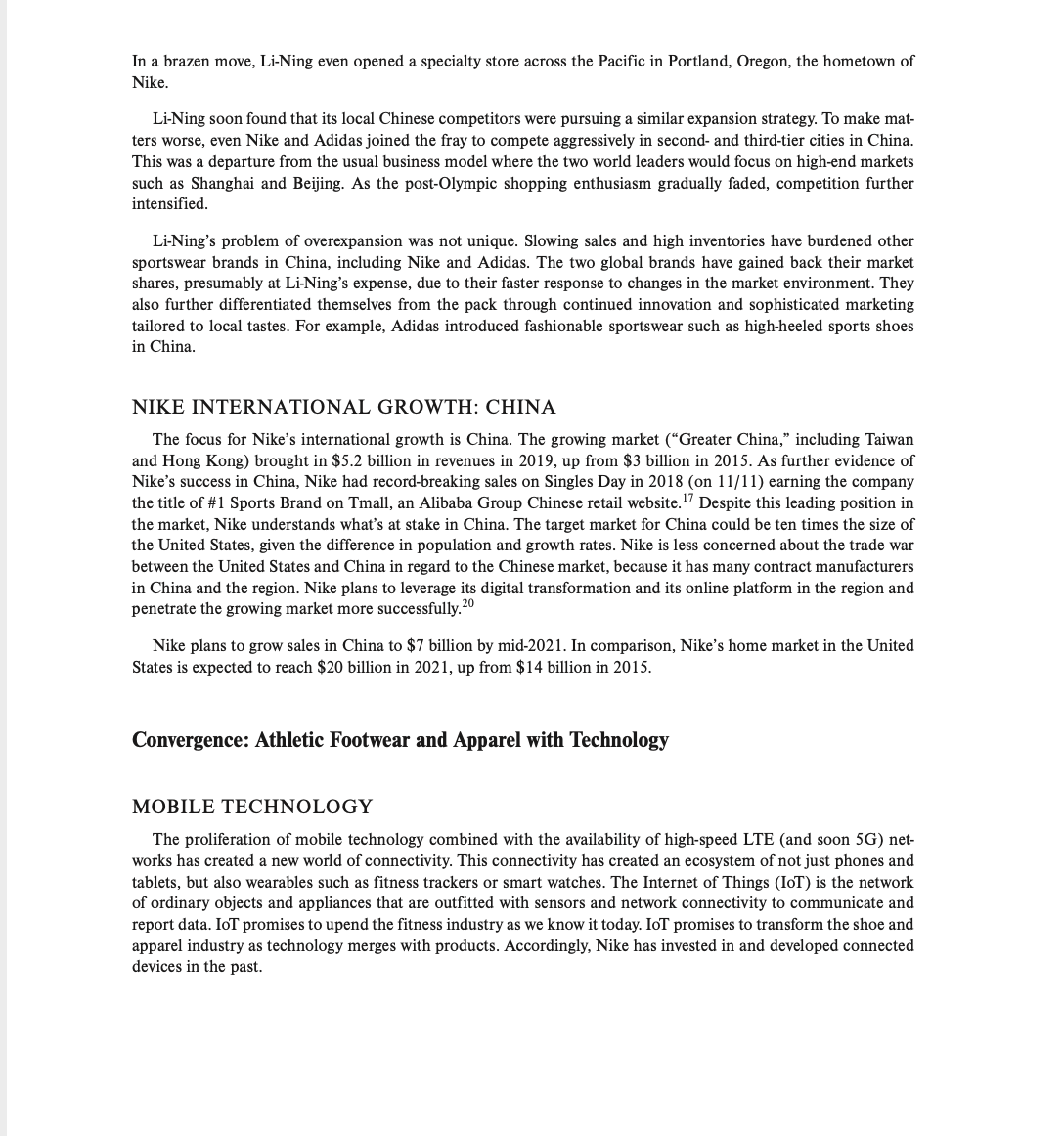
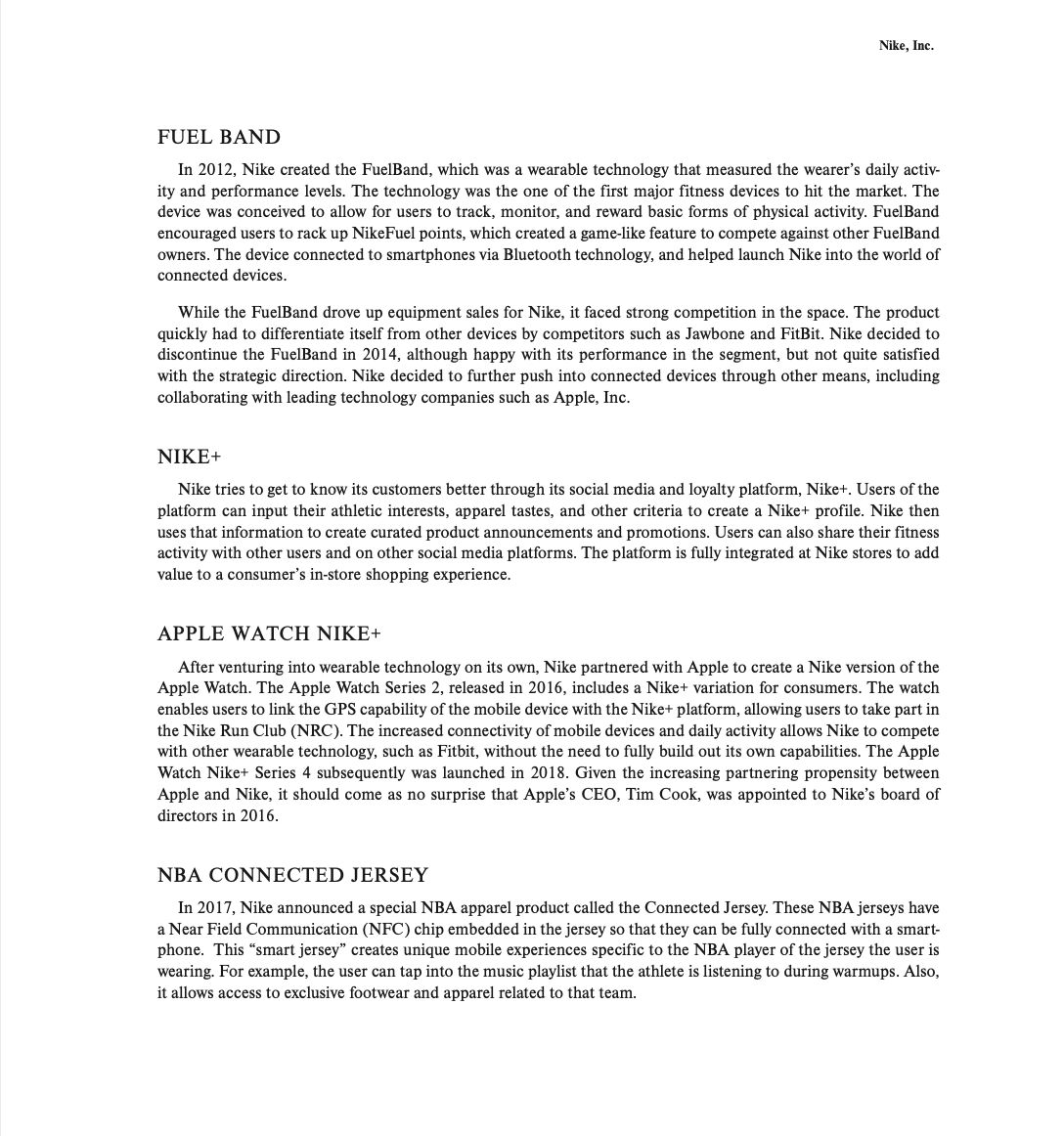
Step by Step Solution
There are 3 Steps involved in it
Step: 1

Get Instant Access to Expert-Tailored Solutions
See step-by-step solutions with expert insights and AI powered tools for academic success
Step: 2

Step: 3

Ace Your Homework with AI
Get the answers you need in no time with our AI-driven, step-by-step assistance
Get Started


